Sydney’s Most Haunted Places: Ghosts, Legends, and Chilling Secrets
Sydney’s history-rich streets and parks are home to many eerie legends.
The city’s oldest precincts, abandoned asylums and hilltop lookouts all carry ghost stories – and in some cases, organised ghost walks or tours.
Below are some of the most famous haunted locations in the Sydney area, including their history, reported hauntings, access notes, and any ghost tours offered.
Quarantine Station (North Head, Manly)
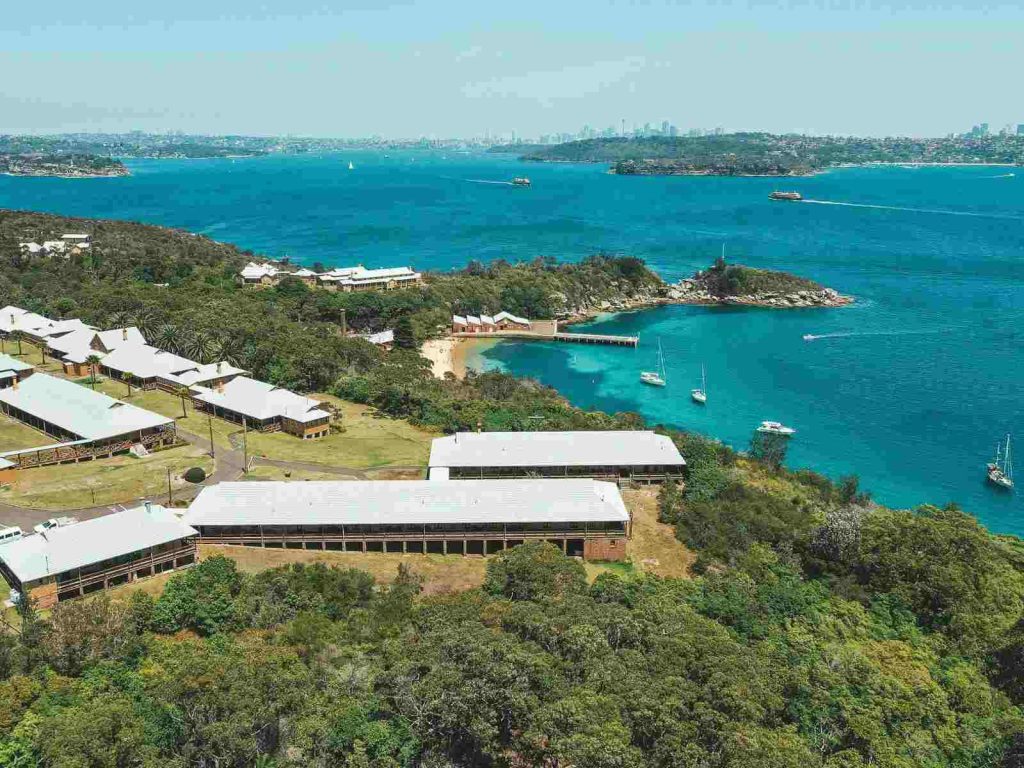
The Old Quarantine Station on North Head (Manly) was established in 1832 as the first port of call for ships with infectious diseases.
Over 150 years, it housed sick passengers and families in cramped sandstone wards – around 581 patients died there. It closed in 1984.
Today, it’s restored hospital blocks and a former morgue stand amid native bushland. Its atmosphere – “like a horror movie,” as one writer noted – is deeply eerie, with waves breaking nearby and wind through ghostly wards.
Reported hauntings abound. Visitors and paranormal investigators have reported feeling cold touches and experiencing unexplained hand pressure in the old morgue and hospital wards.
One person on a Q Station ghost tour claimed to have been touched on the leg in the morgue by an unseen presence.
Guides describe a “strict matron” ghost, as well as playful spirits and intellectual phantoms that linger on site.
A local journalist calls the station’s ghost tours “infamous for weird and wacky experiences” and notes many swear they’ll never return.
The Quarantine Station is now a heritage tourism site and hotel.
Visitors can walk the grounds by day, view museum exhibits and stay overnight in the historic buildings. Admission is free, but booking is needed for tours.
Q Station runs regular ghost tours and “haunted history” experiences by lantern light.
For example, the centre offers nighttime Ghost History Tours and even overnight “ghost hunts” in the old hospital blocks.
These officially licensed tours let guests wander the cemetery cottages and morgue with ghost-hunting devices – an extremely popular (and spooky) Sydney activity.
The Rocks (Sydney Harbour precinct)
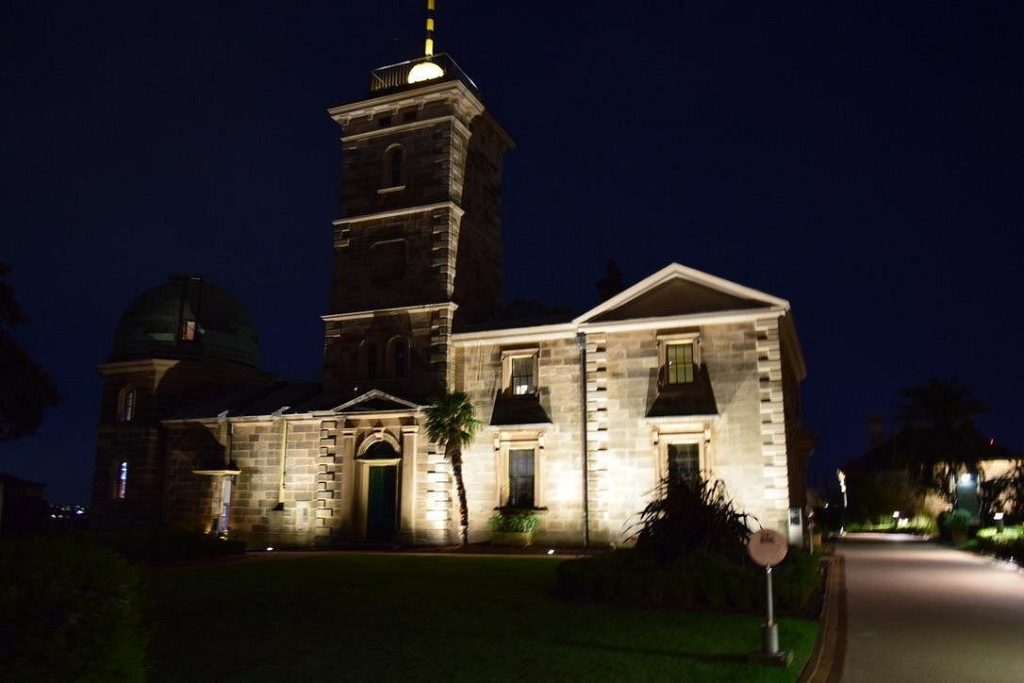
Sydney’s Rocks district – the harbour’s earliest European settlement – is often called “Sydney’s haunted heart”.
First settled in 1788, it was a dense maze of convict huts, sailors’ pubs and early colonial buildings (many built of sandstone, hence “The Rocks”).
It saw murders, shipwrecks, riots and the 1900 bubonic plague demolition, leaving hidden alleyways and brick cellars.
Today, these cobbled lanes and colonial houses remain, alongside lively markets and cafes – but many retain ghostly lore.
Legends say restless spirits linger among the sandstone ruins and narrow streets.
The Rocks website notes “chilling tales from the city’s colonial past” beneath the cobblestones.
Specific tales include murders in Cadman’s Cottage, tragic accidents at Reynold’s Cottages, the grim “Dead House” Coroner’s Court, and the “most haunted” Russell Hotel, where staff hear phantom footsteps. (Whether strolling by daylight or night, visitors feel the history pressing in.)
In 2024, a ghostly face even appeared in a pub window as a publicity stunt – but it underscored the precinct’s reputation.
As Time Out notes, “The Rocks precinct [is] regarded as one of Sydney’s most haunted suburbs”.
Access: The Rocks is a public neighbourhood – open at all hours for wandering its lanes. Cadman’s Cottage and Susannah Place Museum in the Rocks are open to visitors.
There are no entry fees for the streets themselves. (At night, the area is quiet but safe; some alleys are dimly lit.)
Ghost tours: The Rocks offers plenty of guided ghost tours.
For example, The Rocks Ghost Tours (established 1994) leads lantern-lit walks through back lanes and heritage sites, and Lantern Ghost Tours also run popular historical-ghost tours here.
Time Out explicitly recommends them: “the ghost tours around The Rocks will teach you everything you need to know about the area’s … lingering spirits”.
These tours visit laneways, old pubs, and courtyards, blending real history with reported hauntings (often culminating in secret, “off-limits” spots). (No citation is needed to note that such commercial tours operate nightly.)
Cockatoo Island (Parramatta River)
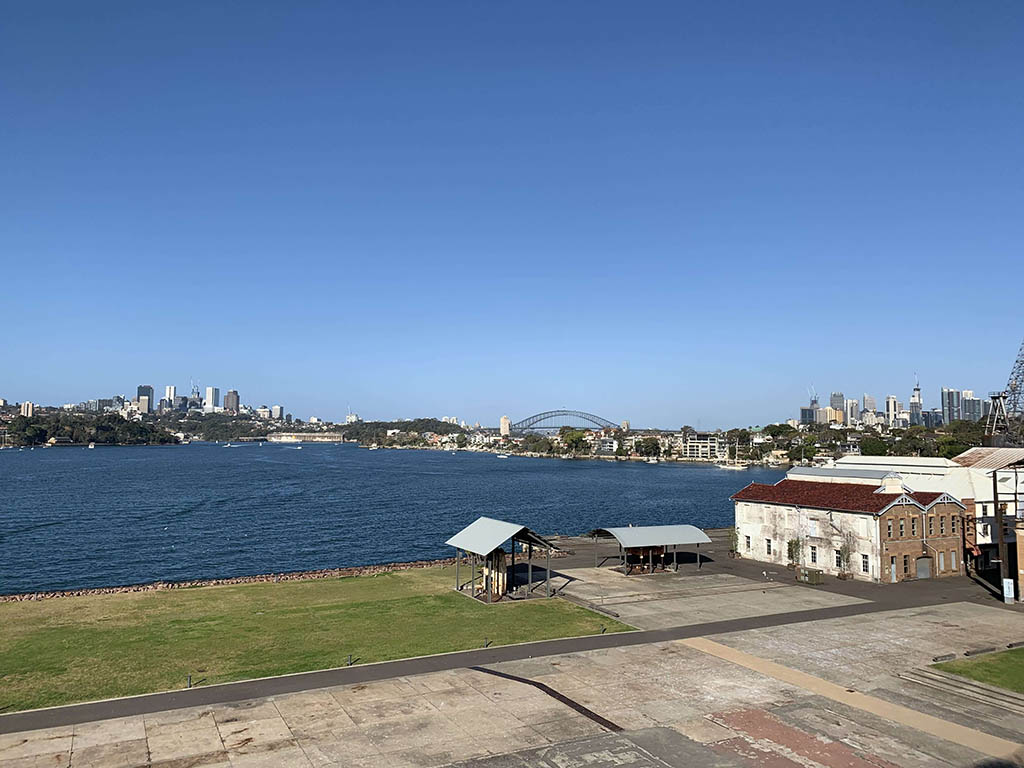
Cockatoo Island in Sydney Harbour is a UNESCO-listed convict and shipbuilding site.
Established as a punishment prison (1839–1869) and later Australia’s largest dockyard (1857–1991), it is rife with industrial ruins: hulking brick workshops, dock gates and gaol cells.
The atmosphere is strange – a windswept isle dotted with ruins and graffiti, isolated by water.
Tourists wander its workshops or camp on weekends, but many feel a supernatural vibe in the old stone rooms.
Reports of ghostly phenomena are common.
Visitors say they’ve felt breaths of air as if someone’s beside them, smelled tobacco smoke or perfume with no source, and sensed an “unexplained chill” in corridors.
People claim to see shadowy figures in the forgotten corners of the former gaol and craft workshops. (On a 2022 ghost tour, for instance, guests saw a figure dart across a dark corridor – only to find no one was there.)
The island is fully open as a tourist park (ferries from Circular Quay and Balmain). Entry is free (except for the ferry fare), and visitors can explore the historic precinct independently.
Cockatoo Island offers themed ghost experiences: “Dark Past” evening tours and “Ghost Tours” after dark.
Time Out explains that on Saturday nights, a Dark Past Tour explores the convict-era ruin, and an 18+ Ghost Tour lets adventurers hunt spirits in closed buildings. (These lantern-lit tours, run by the Sydney Harbour Trust, recount the island’s bloody history and play with spooky effects – e.g. voices on old telephones, memorable soundtracks.)
In short, Cockatoo Island combines history walks with paranormal storytelling, appealing to both history buffs and ghost enthusiasts.
Old Government House (Parramatta)

Built starting in 1799 by convict labour, Old Government House in Parramatta is Australia’s oldest surviving public building.
It was the Georgian country residence of early governors (Hunter, Macquarie, etc.) into the 1840s.
The house’s stately sandstone hallways (and the surrounding domain) saw hundreds of colonial events, but also tragedies: for example, Governor FitzRoy’s wife, Grace (Lady FitzRoy), died when thrown from a carriage in 1847.
Today, the house is a museum open by guided tour only. Its history and architecture are remarkable, but it also carries eerie folklore.
Visitors report ghostly figures on the property. One famous phantom is the “Lady in Blue” (supposedly a governor’s daughter), often seen in a second-floor window.
Lady FitzRoy herself is said to walk the hall, and after her 1847 death, people found their hair standing on end near the foyer where her body lay.
Even the servant’s quarters have a scary reputation: guests feel sudden choking or dizziness there, attributed to “the ghost of the man in black,” a former supervisor. I
n short, New South Wales authors note that OGH’s “ghostly patrons” (blended with real history) give this old domain a creepy ambience.
Access: The building is inside Parramatta Park, which is open to the public. You can approach Old Government House on foot during park hours; however, entry to the building itself is only available via a guided tour.
Tours are typically run by the National Trust or the Friends of Old Government House.
For example, the National Trust holds monthly “Ghost Nights” (after-dark candlelit tours) where visitors hear spine-tingling stories. (These ghost events sell out fast and are limited to adults.) In brief, one can’t just pop in – you must book a tour – but organised ghostly experiences are definitely offered.
Hyde Park Barracks (Sydney CBD)
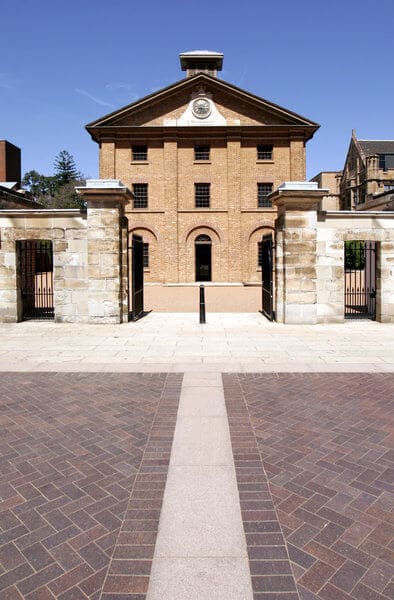
The Hyde Park Barracks on Macquarie Street (built 1817–1819) housed up to 600 male convicts in cramped dormitories.
It later served as a hospital, women’s prison and courthouse, and is now a UNESCO World Heritage museum.
The grey sandstone rooms and attic barracks preserve the bleakness of colonial incarceration.
Numerous apparitions have been reported. According to local historians, “noisy ghosts” still roam the galleries: visitors describe pounding footsteps overhead and sudden cold spots in the old dorms.
One commonly told spectre is a foul-mouthed former prison superintendent whose swearing seems to echo through the halls.
A “woman in white” apparition has been spotted beneath a front-avenue fig tree, and a man in faded convict uniform is said to drift in one hallway.
Staff at the Sydney Living Museums site have occasionally heard unexplained moans or seen lights flicker unbidden in the museum wing. (These stories have made Hyde Park Barracks a fixture on Sydney ghost walks.)
Access: The Barracks is open daily as part of Sydney Living Museums (10 am–5 pm).
Visitors can tour the convict dormitory rooms, see the archaeological exhibitions, and walk the back staircases (once the prisoners’ only shelter from rain).
There are no special ghost tours here, but the regular guided tour of the barracks naturally touches on its haunted reputation. (No citation is needed to mention that the site is open and interpreted as a museum.)
Darlinghurst Gaol / National Art School
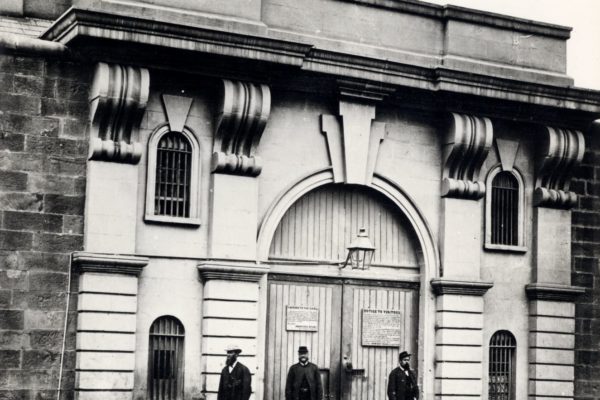
The heritage brick walls of the former Darlinghurst Gaol (later an orphanage and now the National Art School) loom over Forbes Street in Darlinghurst.
Built in 1841, it was a notorious high-security prison – 76 people were hanged there between 1844 and 1907. (Executions occurred both outside on a scaffold and later inside the walls.)
After closing as a prison in 1914, the empty yard and cells were repurposed for artists. The gaol’s dark history (abuse of women prisoners, scandalous murders) has left a heavy atmosphere.
Artists and visitors claim the site is genuinely haunted.
Employees report hearing strange sounds, including footsteps pacing empty corridors and whispering voices in locked studios.
One famous urban legend is of a “bodyless head” apparition – seen near the old scaffold site by the toilets. Others feel pressure on them in an upstairs corridor (once death row), or see a shadowy figure that evaporates when approached.
A 2020 Time Out piece warns art gallery visitors to “keep your wits about you” here. In sum, the air of the sandstone gaol still seems to carry its executions and tragedies.
Access: The compound is semi-public. The National Art School galleries and courtyards are open when classes are not in session, and many exhibitions are free to visit.
You can wander the convict-built alleyways during daylight (the preserved gallows pit can be seen under glass).
There are no formal ghost tours at this site. (The “Captivate” book on the school recounts many anecdotes, but tours are just art-history tours, not ghost hunts.)
Callan Park Hospital (Rozelle)
The Callan Park estate (formerly the Tarban Creek and Rozelle Hospital) in Rozelle was Sydney’s largest asylum, opened in 1878 as the Callan Park Hospital for the Insane.
Its vast grounds and grand pavilions once housed thousands of patients. Overcrowding, brutality and neglect were rife; many unclaimed patients were buried in mass graves on-site.
The hospital finally closed in 2008, and today the campus hosts the Sydney College of the Arts (and parkland).
Legends of Callan Park still haunt it. Visitors often remark that the grounds are unnaturally cold and silent.
Time Out writes that photographers see “hints of ghostly figures on film” amid the old wards.
Rumours swirl about secret tunnels under the site for moving patients, and locals claim to have heard faint screams or seen shadowy figures in abandoned corners (though these accounts are mostly anecdotal).
In particular, some people claim to feel sudden ice-cold gusts inside the disused rooms – a classic sign of a spectral presence.
Access: Callan Park is open as public parkland. The historic pavilions and grounds can be visited during the day, and the Friends of Callan Park offer daytime historical tours on weekends.
These focus on architecture and history, rather than ghosts; no official “ghost tour” is provided. (However, some paranormal groups do occasional after-dark investigations privately.)
In practice, anyone can walk or cycle through the park and explore its atmospheric ruins at will.
Gladesville Mental Hospital (Tarban Creek, Gladesville)
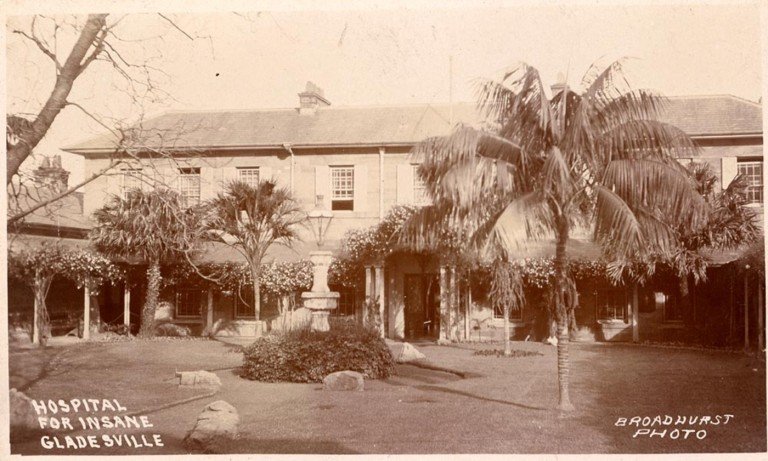
Gladesville Hospital (originally Tarban Creek Lunatic Asylum) was Australia’s first purpose-built mental asylum (opened 1838).
For over 150 years, it housed the mentally ill, many under harsh conditions. When it closed in 1997, it left behind decaying stone wards and long-abandoned gardens.
More than 1,000 former patients were buried in unmarked graves on the sprawling site, and the buildings themselves were constructed atop even older burial sites. The ruins feel extremely ominous.
Urban explorers describe an “eerie presence” around the derelict wards.
According to reports, cold spots and muffled voices have been experienced on the grounds.
One photo (taken by a visitor) supposedly captures a faint human outline in a ruined corridor, visible only on instant film.
Paranormal interest is high, though “tours” are usually private ghost-hunting expeditions (outside official channels).
Access: Gladesville Hospital is now mostly closed off and derelict.
The site has been sold and partly redeveloped, so most buildings are fenced. There is no public access to the old wards (no permission to enter – it is not open).
Paranormal groups sometimes coordinate “ghost hunts” on site, but these are unofficial.
Final Thoughts
Each location above blends Australia’s colonial past with chilling folklore. Ghost seekers can now visit select sites via official tours (Q Station, Cockatoo Island, The Rocks, Old Government House), while others (Callan Park, Darlinghurst Gaol, Gladesville) can only be viewed from the outside or through special events.
The accounts above draw on local history and published reports of haunting.
Whether one seeks goosebumps or just a spooky night out, Sydney’s haunted places offer plenty of atmosphere – from ivy-clad asylums to foggy harbour fortresses – each with stories that linger after dark.
